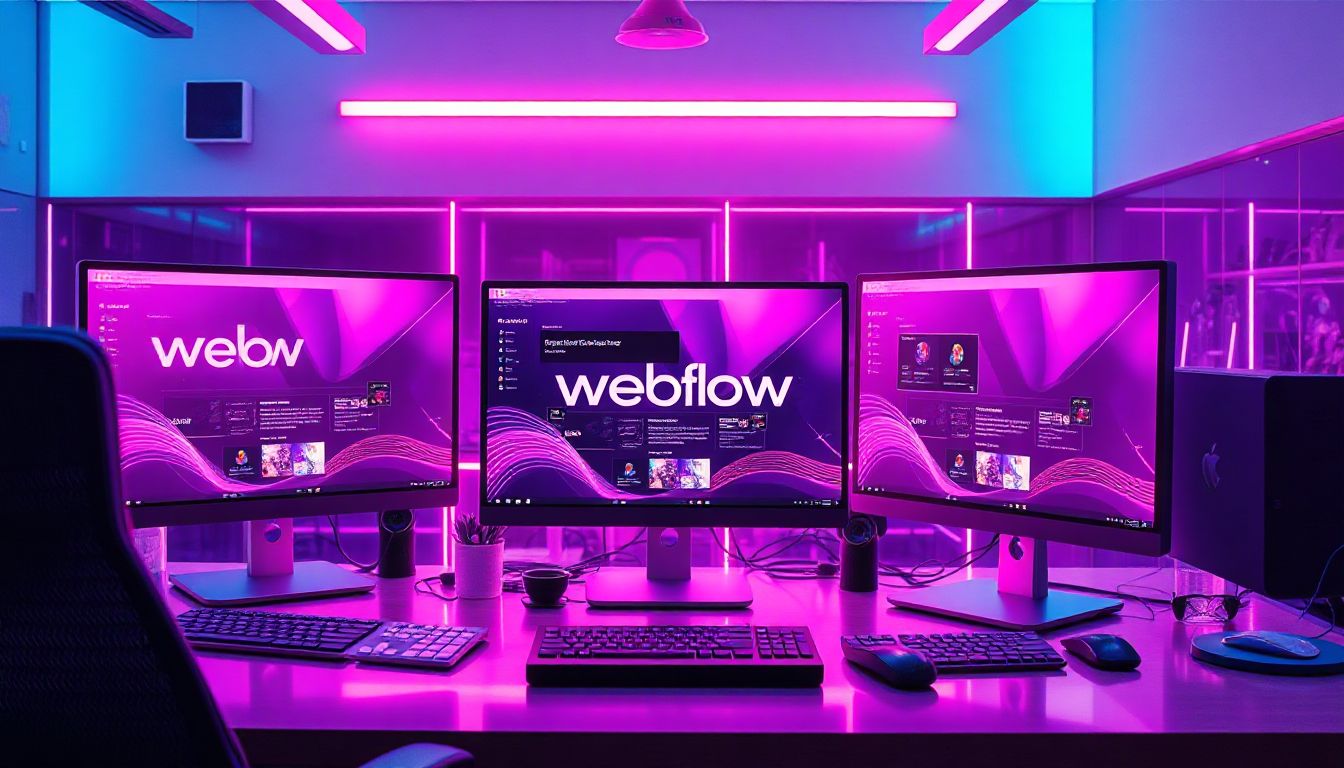Introduction
Webflow has become a top choice for building websites in 2025. It's known for blending design freedom with easy management. Whether you're a designer, developer, or business owner, finding the right platform is more important than ever. Webflow offers a sleek way to create visually stunning sites without heavy coding. Its rise is driven by advanced features, a flexible interface, and a support community that keeps growing.
What is Webflow? An Overview
Webflow is a website builder that mixes visual design with powerful code control. It helps you craft sites that look professional and work smoothly. Unlike simple drag-and-drop tools, Webflow gives users full control over design, without needing a developer’s knowledge. It's perfect for web designers, agencies, and small to medium-sized companies wanting something customizable yet manageable. In 2025, Webflow stands out by combining easy editing with robust design tools, making it a top player in web creation.
Webflow Features and Capabilities
Visual Design and Customization
Webflow’s visual environment lets you drag elements into place easily. The platform supports complex animations and interactions so you can make your site pop. Plus, you can adjust everything using CSS, HTML, or JavaScript when needed. This makes it flexible—whether you want a simple look or a very detailed website.
Content Management System (CMS)
Built-in CMS allows for dynamic content. This is perfect for blogs, portfolios, or product catalogs that change often. You can create custom fields, organize your content easily, and update your site without touching code.
Ecommerce Integration
Webflow isn't just for static pages. It now includes ecommerce features that let you launch online stores. You can manage products, customize checkout pages, and accept payments securely. Small shops find this especially useful without needing dedicated ecommerce platforms.
Hosting and Performance
Hosting is included with Webflow. It uses a global CDN, making your site load fast from anywhere. Speed boosts your SEO and keeps visitors happy. Webflow also offers tools that help optimize your website for search engines, making it easier to rank in Google.
Additional Tools and Integrations
You can connect Webflow to marketing tools like Google Analytics, Mailchimp, or Zapier to automate tasks. It also lets you embed third-party plugins or custom code. This makes your website more powerful without breaking the default setup.
Pros of Using Webflow in 2025
Advanced Design Flexibility
Webflow lets you build almost anything visually. No code required, but it still offers tools for very detailed customization. For example, some top sites on Webflow look more like art than basic templates.
No Need for Extensive Coding Knowledge
Designed for non-coders, Webflow simplifies web creation. It bridges the gap between designers and developers, helping teams work faster. If you've ever felt limited by basic website builders, Webflow could be your solution.
Built-in SEO and Performance Features
Getting found on Google is easier with Webflow. It offers SEO tools like meta titles, descriptions, and clean code. Plus, the fast-loading sites and reliable hosting keep your visitors happy and improve ranking chances.
Growing Community and Support Resources
More users are sharing tips and tutorials on Webflow University and forums. Webflow’s help center offers step-by-step guides. This community makes learning new skills and troubleshooting easier.
Cons of Using Webflow in 2025
Pricing Structure and Costs
Webflow’s plans can get pricey, especially for beginners. The most advanced options come with higher monthly costs. It takes effort to truly master the platform, which might be discouraging for some.
Limitations for E-commerce
While Webflow’s online store tools work well for small shops, they aren’t ideal for large online businesses. Transaction fees and scalability issues can become a problem as your sales grow.
Complexity for New Users
Webflow has a learning curve. If you're new to websites or design, it can feel overwhelming at first. You may need support or even hire a professional to get started on complex projects.
Restrictions on Certain Customizations
Though flexible, Webflow isn’t perfect for every task. Backend customization can be limited. For more advanced features, you might have to turn to third-party apps or custom code.
Webflow Pricing in 2025
Plans Overview
Here’s a quick look at Webflow’s main plans:
- Free: Basic features, limited projects
- Basic: Custom domains, better control — suitable for small websites
- CMS: Content management tools, ideal for blogs or portfolios
- Business: Enhanced hosting and additional features for growing sites
- Ecommerce: Built for selling online, includes product management & checkout
Cost-Benefit Analysis
Pricing varies from free to $200/month for Enterprise plans. For small projects, the CMS plan offers the best value. Larger businesses or serious online stores might need the higher tiers for scalability and extra features.
Tips for Choosing the Right Plan
Think about your project’s size and goals. If it’s just a portfolio, go for the basic plan. Want a full online store? The Ecommerce plan is best. Also, consider whether you’ll do it yourself or bring in help—some plans support team collaboration better.
Real-World Examples and Case Studies
Many websites in 2025 are built on Webflow. Creative agencies showcase portfolios that look like artworks, and brands use Webflow to create engaging online experiences. Companies report faster project turnarounds and easier content updates, thanks to Webflow’s intuitive tools.
Final Verdict: Is Webflow the Right Choice in 2025?
Webflow shines with its flexible design and friendly interface. It’s best for those who want control and rapid customization without coding. But it’s not cheap and can be complex at first. Small businesses or creative professionals often find it perfect, especially if they value top design and good SEO. Larger e-commerce sites may need a different platform.
Conclusion
Webflow in 2025 packs a punch with its design power, content options, and hosting. It’s an ideal choice if you crave control without coding. Still, keep an eye on costs and learning curve. Get started by exploring tutorials and testing plans suited to your needs. With the right approach, Webflow can help you build standout websites that stand out in the crowded online space.
